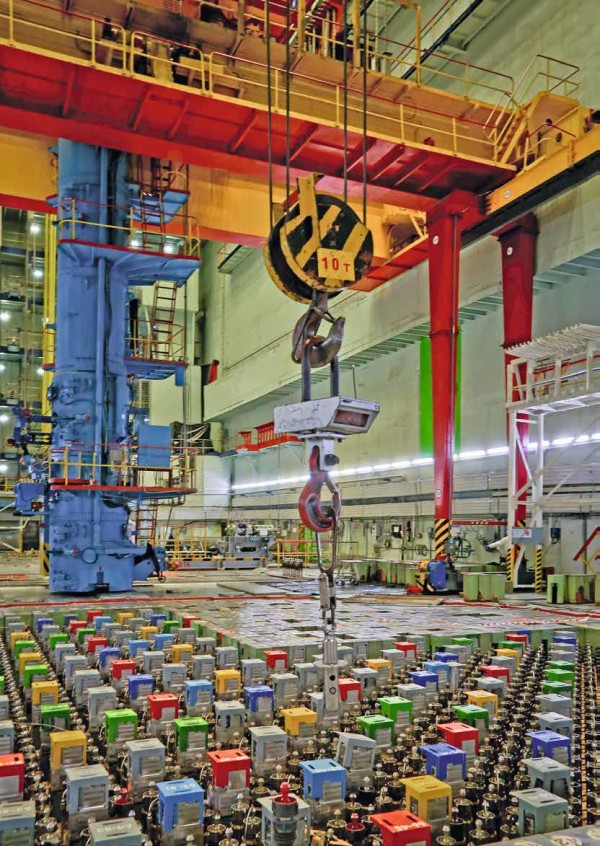 Unit 1 at Russia’s Smolensk NPP has been closed for a scheduled maintenance outage during which major work will be carried out to restore characteristics of the graphite stack of the reactor in addition to replacing the technological channels. This procedure (URH) has already been performed on the RBMK reactors at the Leningrad and Kursk NPPs but never before at Smolensk.
Unit 1 at Russia’s Smolensk NPP has been closed for a scheduled maintenance outage during which major work will be carried out to restore characteristics of the graphite stack of the reactor in addition to replacing the technological channels. This procedure (URH) has already been performed on the RBMK reactors at the Leningrad and Kursk NPPs but never before at Smolensk.
“We have been preparing for quite a long time to start practically mastering the technology that will allow us to manage the resource characteristics of the reactor core,” noted Smolensk NPP Director Pavel Lubensky. “The task is responsible both from the point of view of its being something fundamentally new for us, and from the point of view of the need to complete it quickly while observing strict safety requirements. It is extremely important for maintaining the reliable operation of the power unit and generating electricity at the targeted level for 2023 of at least 21.13 billion kilowatt hours.”
Alexey Leshchenko, Chief Engineer of Smolensk NPP said nuclear utility Rosenergoatom had set a limit for the repair outage of 125 days as opposed to the usual 135 days. “In order to achieve this indicator, the experience of the Leningrad and Kursk NPPs, where the URH procedure has been optimised, will be very useful to us. We will use the tools of the Rosatom production system that help identify and eliminate non-production losses.”
Almost 500 people will be involved in the work – employees of the Smolensk NPP centralised repair shop as well as from contractor – JSC Atomenergoremont and from Prolog LLC, a Russian developer of unique equipment for solving non-standard tasks at nuclear industry enterprises. Prolog also manufactured all the necessary equipment, mechanisms, and devices, including robotics, needed for the work.
Other work will also take place during the outage including repairs to the voltage regulation device under the load of the transformer, oil coolers on block transformers, and the drainage duct of the equipment. Other equipment will be upgraded.
Before the start of the graphite repair, checks were undertaken by a Rosenergoatom commission chaired by the chief technologist of the maintenance, repair & installation department, Vladimir Karas. “Since 2011, when we first encountered a change in the geometry of the graphite stack caused by neutron radiation unit 1 of the Leningrad NPP, we have developed and improved the technology for returning graphite columns to their design state,” he said. “We substantiated its safety with [regulator] Rostekhnadzor after experiments on test benches.”
He added: “It should be noted that unit 1 of the Smolensk NPP will become a pioneer in implementation of our sectoral programme for extending the service life of units with 2nd and 3rd generation reactors up to 50 years, aimed at increasing nuclear generation in the Russia’s energy balance up to 25% by 2045. This means that there are still 7-8 stages of URH ahead. Of course, the first one is the most difficult, but we will succeed: we have organisational and technical readiness, we have personnel with the necessary qualifications.”
Image courtesy of Rosatom






